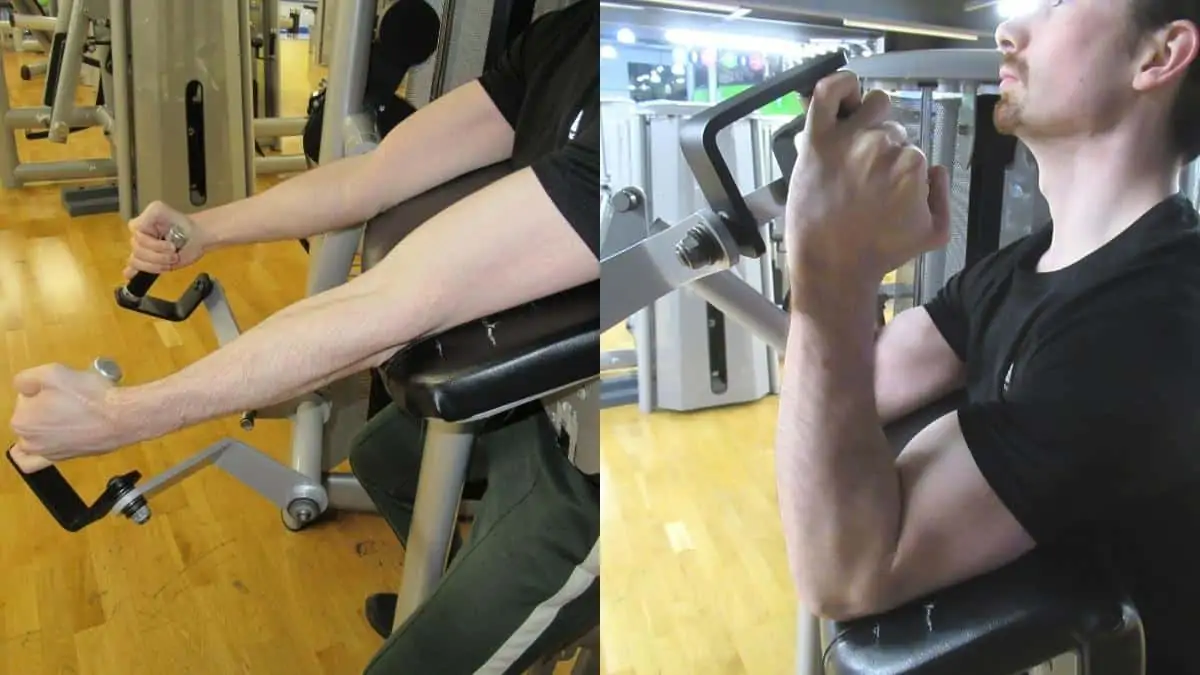Besides forearm supination, the primary biceps function is elbow flexion, which is where you decrease the distance between your lower and upper arm. We can use this knowledge to our advantage to train the other key arm muscles, namely, the brachialis and the brachioradialis.
By performing a machine hammer curl or even a DB hammer curl, which is to say, by curling with a neutral grip, you can shift tension onto your brachialis and brachioradialis while still getting plenty of bicep stimulation.
The hammer curl machine exercise, in particular, is an excellent choice here. Since the machine helps to stabilize your upper arms, it’s much easier to maintain the correct lifting form and thus keep the tension on the target muscles.
Machine hammer curl exercise details
- Main Muscles: Biceps brachii, brachialis, brachioradialis
- Secondary Muscles: Forearm extensors, forearm flexors
- Exercise Type: Strength
- Exercise Mechanics: Isolation
- Difficulty Level: Beginner
- Equipment Needed: Bicep curl machine
How to do machine hammer curls correctly

- Select an appropriate weight on a bicep machine.
- Sit on the seat and brace your upper arms against the pad.
- Grab the handles with a neutral grip.
- Curl the weight toward your shoulders.
- Squeeze your biceps and forearms together as they make contact.
- Hold the contraction for a second and then lower the handles until your elbows are almost fully extended.
- Repeat for 3-4 sets of 8-15 reps.
Machine hammer curl benefits
Machine hammer curls are a unique arm exercise because they blast your biceps, brachialis, and brachioradialis muscles without the need for free weights. This makes the movement particularly effective for beginners who’re still learning the proper form [1] or for those who have trouble maintaining a strict lifting technique as the weights get heavier.
Better muscle isolation
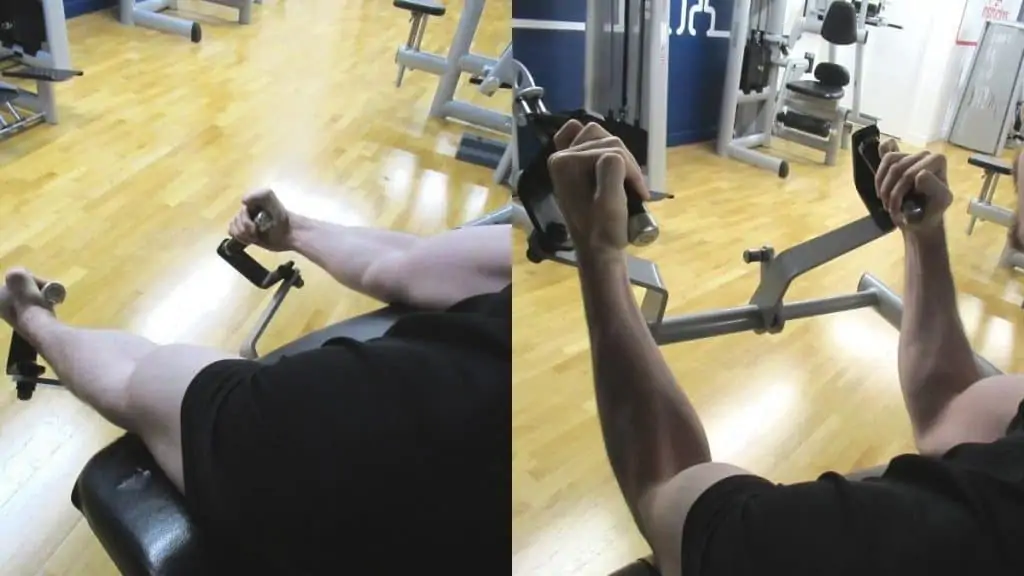
Since the machine hammer curl has you brace your arms against what is essentially a preacher pad, it’s much harder to cheat the weight up with your other muscles. As a result, you can more easily keep the tension on the target areas while also keeping your injury risk to a minimum by not lifting excessively heavy weights.
Similarly, machine hammer curls help you to develop a stronger mind-muscle connection.
How?
Because when you don’t have to think about stabilizing the weight, you can dedicate 100% of your attention to purely working your biceps, brachialis, and brachioradialis.
Faster strength gains
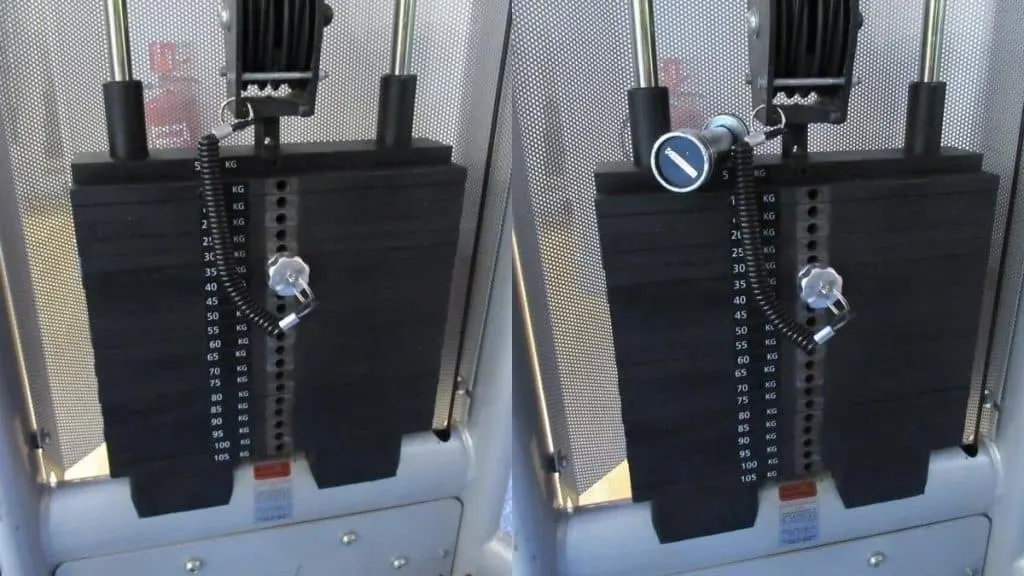
The weight stacks of cable machines typically increase in more manageable increments than dumbbells. As such, it’s much easier to gain strength on the hammer curl machine exercise than the dumbbell version because the weight jumps are smaller, and thus you can increase the resistance more often.
Also, by gaining strength faster, you can simultaneously increase your muscle size by providing your biceps with a greater overload. Ultimately, this extra stimulation will make them grow larger as well as stronger.
Great for drop sets
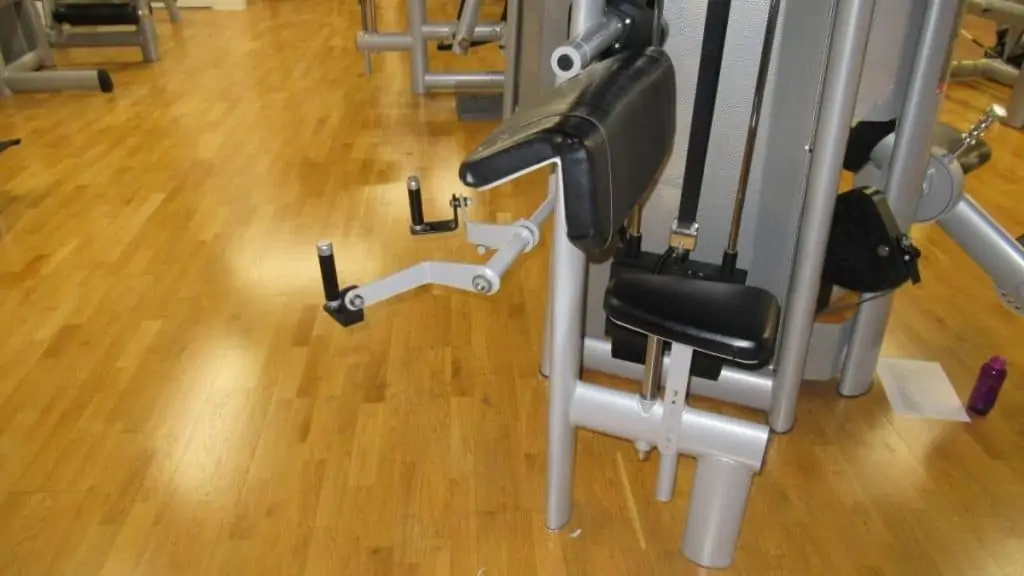
Drop sets certainly aren’t necessary for a beginner to build muscle. [2] And in some cases, performing them may actually impede your recovery and, thereby, your muscle development.
However, if you’re closing in on your bicep genetic limitations, then drop sets can help you to eke out more growth while getting a great pump in the process.
The hammer curl machine makes drop sets especially convenient because you don’t even have to leave your seat to adjust the resistance. All you need to do is reach down and move the selector pin, which makes it much easier to keep your biceps close to the point of fatigue.
Machine hammer curl alternatives

Hammer concentration curls are an effective alternative to machine hammer curls because, like the machine version, they prove a really intense peak contraction in the biceps and brachioradialis. The benefit is that the concentration variation is more convenient to perform because you only need access to a dumbbell and a seat, which makes it a particularly good choice if you train at home.
Spider hammer curls are another useful exercise for building your arms because they make it difficult to cheat the weight up, which in turn helps you to keep tension on the target muscles. The disadvantage is that you have to train each arm separately, which, although not a deal-breaker, will nonetheless increase the length of your workout.
The kettlebell hammer curl is a real dark horse that few lifters would consider. Not only does this movement work your upper arms, but it also trains your forearm extensor muscles via radial deviation, which is an area that many gym-goers need to work on.
Yet, if you only have access to dumbbells, then you can do in out hammer curls. This exercise adds a second dimension to the traditional hammer curl by training your muscles from a different angle, which will help to emphasize the different heads of your biceps.
Should you perform machine hammer curls for your biceps?
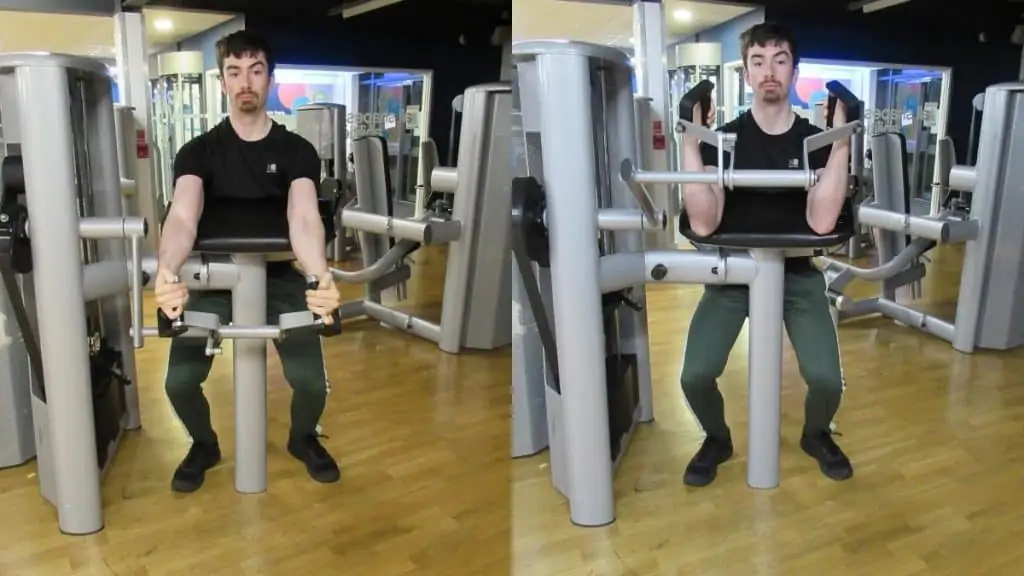
Machine hammer curls are well worth doing if your gym has the necessary equipment. The exercise is highly conducive to maintaining the correct lifting technique because the pad stabilizes your upper arms, and the seat keeps your hips and torso nice and secure.
This naturally makes the movement very beginner-friendly. All you have to do is choose an appropriate weight with the handy selector pin and then curl the handles toward you.
Also, since the machines typically have smaller weight increments than dumbbells, it’s easier to gain strength. This will lead to more muscle growth in the long run if your diet is good, but it’ll also help to keep you motivated in the short term because you can see yourself getting stronger month by month.
References
- Parker, R. (2019, September 24). Free weights or machines? The science and the facts. Human Kinetics Blog. https://humankinetics.me/2018/12/18/free-weights-machines/
- Angleri, V., Ugrinowitsch, C., & Libardi, C. A. (2017). Crescent pyramid and drop-set systems do not promote greater strength gains, muscle hypertrophy, and changes on muscle architecture compared with traditional resistance training in well-trained men. European Journal of Applied Physiology, 117(2), 359–369. https://doi.org/10.1007/s00421-016-3529-1

